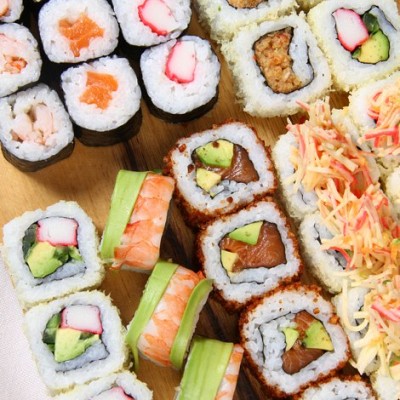Exploring the diverse culinary traditions around the globe offers a delicious glimpse into various cultures. Each tradition weaves together history, community, and unique flavors that tell the story of a people. In this blog, we will delve into eight remarkable cultural cuisine traditions that stand out for their uniqueness and significance. From hearty family meals to vibrant street food, these traditions reflect not only the tastes of their regions but also the values and stories that shape them.
1. The Italian Family Meal Tradition
In Italy, food is synonymous with family, and no tradition illustrates this better than the Italian family meal. Grand Sunday lunches, known as 'pranzo della domenica,' represent a sacred time when loved ones gather around a table to share not only delicious dishes but also stories and laughter. At the heart of this tradition are recipes passed down through generations, often rooted in regional ingredients that highlight the local agriculture.
A traditional Italian meal typically begins with antipasti—an assortment of cured meats, cheeses, olives, and marinated vegetables. From there, the meal progresses to primi, which often features hearty pasta dishes rich in flavor. The secondi showcases beautifully cooked meat or fish, served alongside seasonal vegetables, all complemented by an exquisite selection of wines. This feast isn’t just about the food; it’s an expression of love and tradition that binds families together.
Moreover, the meal is rarely hurried. Italians cherish the social aspect of dining, allowing conversations to flow just as freely as the wine. This practice emphasizes the importance of savoring each moment, reflecting a lifestyle that prioritizes relationships over busy schedules. Thus, the Italian family meal tradition encapsulates the essence of cultural cuisine—a joyful convergence of flavors and familial bonds.
2. Indian Festival Feasts
In India, festivals are celebrated not just with rituals and fervor but also with extravagant feasts that vary by region and occasion. Each festival tells a unique story and is accompanied by a specific array of dishes, making it a central feature of cultural cuisine. For instance, Diwali, the festival of lights, sees household kitchens bustling with the preparation of sweets like 'ladoos' and 'barfis,' while savory snacks like 'samosas' bring flavors and aromas that radiate joy.
During Eid, families gather to share a special meal consisting of dishes like 'biryani' and 'kebabs,' symbolizing togetherness and community. The preparation and serving of these meals often involve the entire family, inviting everyone to partake in the culinary art of their heritage. This communal cooking fosters stronger bonds and allows traditions such as the 'breaking of fast' with dates and shared sweets to shine.
Ultimately, Indian festival feasts bridge generations, as recipes that may have originated centuries ago continue to evolve while remaining deeply rooted in tradition. The act of cooking and sharing food highlights respect for ancestry and promotes a sense of identity that is both personal and communal—a remarkable aspect of cultural cuisine.
3. Japanese Kaiseki Dining Experience
Kaiseki is a traditional multi-course Japanese dinner, often considered the pinnacle of dining culture in Japan. Characterized by its meticulous attention to detail, each kaiseki meal is crafted to reflect the season and ingredients available, showcasing the essence of 'shun' (seasonal ingredients). This dining experience is more than just a meal; it is an art form, where the presentation is as captivating as the flavors.
A typical kaiseki meal may begin with 'sakizuke' (an appetizer) and progress through several courses, including 'su-zakana' (a seasonal dish) and 'naka-zakana' (a fish course). Each dish is served in beautiful tableware, enhancing the visual impact and underscoring the importance of aesthetics in Japanese culture. The meal is often punctuated with sake or green tea, adding another layer of tradition and flavor to this culinary journey.
Beyond the food, kaiseki embodies a philosophy of mindfulness and appreciation for nature. Diners are encouraged to eat slowly and savor each bite, making the experience reflective rather than merely indulgent. This reverence for food and its preparation creates a meaningful connection to the cultural roots of Japan—transforming a meal into a cherished memory.
4. Mexican Día de los Muertos Cuisine
Día de los Muertos, or the Day of the Dead, is a vibrant Mexican tradition celebrating loved ones who have passed away. Integral to this celebration is the culinary aspect, where families prepare a plethora of dishes to honor the deceased. This unique cultural cuisine combines flavors, colors, and symbols that reflect the deep respect for ancestors and the continuity of life. Pan de muerto, a special bread shaped like a skull, is often made alongside vibrant decorations and shrines laden with photographs and belongings.
Traditional dishes also include mole, tamales, and various regional specialties that may be left on altars as offerings. The preparation of these foods is a community event, bringing together family members to cook and reminisce about the stories connected to each recipe. It's a beautiful way of keeping memories alive, as the scents and flavors transport individuals back to treasured moments.
Through this culinary celebration, the messages of love and remembrance resonate strongly, as food has the power to evoke memories of bygone eras. It showcases the idea that those who have crossed over are still very much part of family life, making Día de los Muertos a significant cultural cuisine tradition that blends joy, sorrow, and identity.
5. The Middle Eastern Mezze Sharing Tradition
In the Middle East, meals are often communal experiences characterized by mezze—a selection of small dishes served as appetizers. Featuring a vibrant assortment of flavors, mezze includes staples such as hummus, baba ghanoush, tabbouleh, stuffed grape leaves, and falafel. This beloved culinary tradition invites diners to share and sample a variety of tastes while encouraging social interaction, epitomizing hospitality.
The preparation of mezze is particularly special, as it reflects local ingredients and cultural influences. Families often gather to prepare these dishes, with each region adding its own twist. While the food itself is delightful, the spirit of mezze lies in the act of gathering—everyone sharing their favorites, exchanging stories, and creating memories around the table.
Moreover, mezze transcends mere consumption; it fosters a sense of community, reinforcing bonds through the act of sharing. Regardless of the occasion, whether a festive holiday or a casual get-together, the style of dining remains at the heart of Middle Eastern culture—a celebration of both food and fellowship.
6. The Southern BBQ Cookout Culture
In the Southern United States, BBQ cookouts are more than just meals; they are time-honored gatherings filled with joy, music, and family tradition. Whether it’s a backyard grill or a neighborhood block party, the ritual of firing up the grill invites everyone to come together and partake in the communal spirit. Smoky meats, ranging from ribs to brisket, are often marinated for hours, revealing deep, rich flavors that evoke regional pride.
Accompanying these culinary masterpieces are an array of side dishes like coleslaw, cornbread, and baked beans, often created from time-tested family recipes. Each dish carries a unique story, connecting individuals to their past and highlighting the importance of community in Southern culture. Distributing dishes among friends and neighbors during a cookout evokes feelings of generosity and togetherness, making every meal a celebration.
Moreover, Southern BBQ cookouts are not just about food; they promote a lifestyle that values relaxation and camaraderie. With the sounds of laughter and live music filling the air, these gatherings embody the essence of Southern hospitality. They remind us that sharing a meal is about more than sustenance; it’s an opportunity to form connections that transcend generations, fostering community bonds that define Southern life.
7. Peruvian Ceviche and Coastal Heritage
Ceviche, a beloved dish of raw fish marinated in citrus juice, is a quintessential element of Peruvian coastal cuisine. It embodies the country's rich fishing heritage and vibrant flavors, reflecting the harmonious relationship between the people and the diverse marine life found along the Pacific coast. Traditionally, ceviche is prepared with freshly caught fish, combined with chopped onions, cilantro, and a touch of chili for heat, resulting in a dish that bursts with fresh, tangy flavors.
The preparation of ceviche is often celebrated on special occasions, and families have their own cherished recipes that have been passed down through generations. With each bite, one can taste the sunshine and the sea, transporting diners to the picturesque coastal regions of Peru. This culinary tradition also highlights the cultural significance of community, as families often come together to enjoy this dish, making it a centerpiece of gatherings.
Beyond the plate, ceviche reflects the intricacies of Peruvian society, celebrating the blend of indigenous and Spanish influences that characterize its culinary heritage. It represents a joyous fusion of flavors, each ingredient thoughtfully chosen to honor the land and sea. In this way, ceviche does not merely satisfy hunger; it encapsulates the stories of a region, enriching the understanding of cultural cuisine.
8. The Thai Street Food Experience
In Thailand, street food is not just a culinary option; it’s a vibrant cultural experience that reflects the spirit of the people. The streets are lined with vendors cooking up delicious offerings that range from spicy curries to sweet desserts, all prepared with local ingredients and influenced by regional flavors. The accessibility of street food makes it a staple for both locals and tourists, inviting everyone to experience authentic Thai cuisine.
A typical stroll through a Thai market reveals a colorful array of dishes, each one a feast for the senses. From the sizzling sounds of grilled satay to the fragrant aromas of fried rice, the lively atmosphere captures the essence of Thai culinary traditions. Diners can indulge in favorites like pad Thai, som tam (papaya salad), or mango sticky rice, all while interacting with the friendly stall owners who take pride in their craft.
Moreover, the Thai street food experience offers a unique blend of flavors that speaks volumes about the country’s cultural diversity. It encourages social interaction as people gather around stalls, sharing meals, stories, and laughter. This communal aspect emphasizes the importance of food in Thai culture, highlighting that culinary delights are best enjoyed together. Thus, every mouthful is a taste of Thailand’s rich heritage, celebrated on the bustling streets.







































